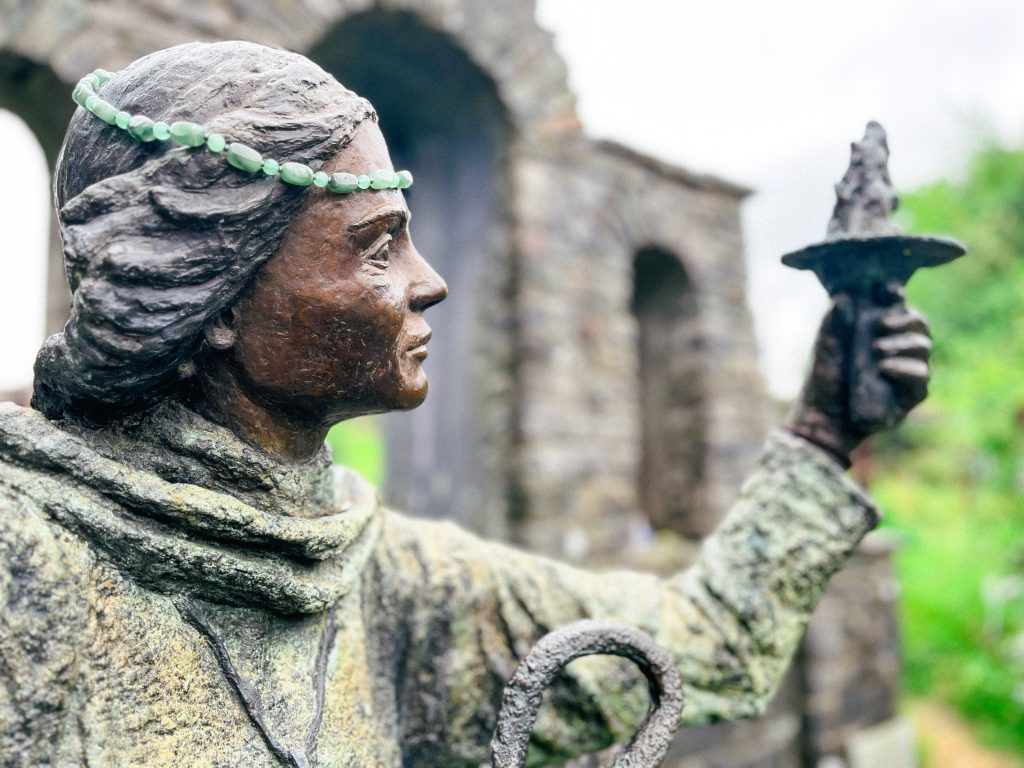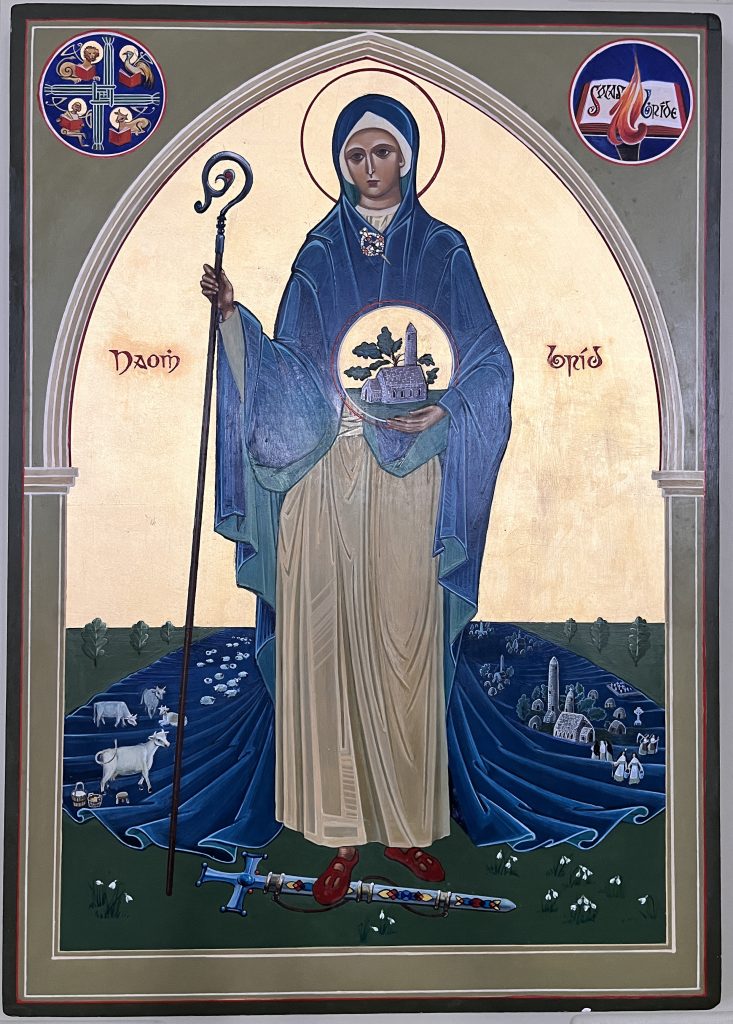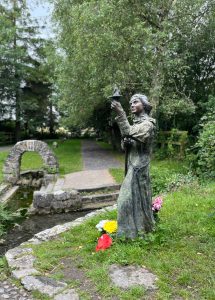Brigid of Kildare
5th Century Abbess
Brigid of Kildare (circa 452-525) is venerated as one of the three patron saints of Ireland, together Saint Patrick and Columba. Brigid is celebrated as an evangelist, church planter, leader, helper of the poor, and key figure in the spread of Christianity in Ireland. Brigid received numerous honorable titles such as “Mary of Ireland,” due to the magnitude of her attributed miracles and legends and her importance to the Irish Church.



Biography – Brigid, born to an enslaved Christian mother, exhibited a love for God at a young age, and there are multiple stories of her virtue and benevolence to the poor and needy. Brigid elected to take the veil of religious life in 470 AD and soon founded a thriving double monastery of monks and nuns, a church with jurisdiction over most of southwest Ireland, and a school of art. There are three early written accounts of her life, the first being Life of Brigid, written in 650 AD by Cogitosis, an esteemed monk at her monastery in Kildare. This may be the oldest surviving “vitae” (life) of an Irish saint. There are two other accounts of Brigid’s life: the Bethu Brigte, and Leabhar Breac, both written in the eighth century. These three early accounts present some differences, most notably in Cogitosus’s focus on the authority of the Diocese of Kildare, but the accounts are similar enough to provide both historical details and an account of the ministry of Brigid.
Hagiography – There is scholarly debate over whether some miracles and legends attributed to this historical nun are original to her or have been appropriated and blurred with an ancient Irish pagan goddess of the same name. Celtic history tells of an ancient trinity of sister goddesses, all with the name Brigid, associated with healing, poetry, and ironworking. Many of Brigid’s reported miracles involved healing, which may account for the connection, but the historical Brigid was not associated with either poetry or ironwork. Additionally, February 1 is Brigid’s Feast Day as well as the pre-Christian festival of Imbolc, marking the beginning of the agricultural season. More recent scholarship admits that while some syncretism has occurred, there is a plethora of evidence that proves Brigid is not merely a “baptized” pagan goddess, but was an orthodox Christian woman devoted to spreading the gospel and serving the needy wherever she travelled.
From the writings about Brigid, we learn of a young woman who gave freely to the poor, had a special connection with animals and nature, and acted to obey God whatever the cost. Miracles attributed to Brigid have similarities to scriptural ones, such as numerous healings, turning water to ale, and several multiplications of milk, butter, and other foods to provide for the needy. Brigid’s monastery, as well as holy wells across Ireland, have become popular pilgrimage sites to remember this extraordinary woman of God; a woman of the land, contemplation, hospitality, peace, and justice. The Leabhar Breac regards her life and miracles as acts of mercy, noting her desire to feed the poor, stand against hardship, and be gentle to every misery. “She was joyous in God’s commandments, steadfast, lowly, forgiving, and charitable. She was a consecrated vessel for keeping Christ’s body. Her heart and mind were a throne of rest for the Holy Ghost.”
Resources:
- Campbell, ed. The Life of St. Brigid of Kildare by Cogitosus; and Other Selected Writings. Grass Lake, MI: Cruachan Hill Press, 2022.
- Freeman, Philip, ed. Two Lives of Saint Brigid. Dublin: Four Courts Press, 2024.
- Rees, Elizabeth. Celtic Saints of Ireland. Stroud, Gloucestershire: The History Press, 2013.
- “St. Brigid in Tradition and Art.” The Furrow Vol.3.No.2 (1952): 1–4.
